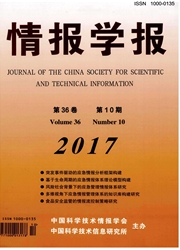

 中文摘要:
中文摘要:
自组织映射(SOM)是一种人工神经网络方法,它通过将相似的输入数据映射到相同或相近结点,将高维输入数据显示在低维空间中,具有保留输入数据的拓扑结构的优点,便于用户观察数据的分布特点。数据分析是SOM的重要应用领域之一。本文分析了SOM的各种学习算法(包括序列学习、批学习、k-batch学习、将空间访问方法引入SOM等算法)的优缺点和适用情况,挖掘了不同的SOM输出维度、结点形状及输出大小,并分析了三种成熟的SOM工具(SOM Toolbox,Viscovery SOMine和Databionic ESOM Tools)对这些算法、输出形式的支持程度,为SOM用于数据分析提供了细化而适当的方法借鉴。
 英文摘要:
英文摘要:
Self-organizing map (SOM) is an artificial neural network technique for visualizing high dimensional input data in a low dimensional space by projecting similar input data onto the same or neighboring ceils. This allows users to observe the distribution characteristics of input data. Data Analysis is one of the most important application fields of Serf-Organizing Map. This article analyzed the advantages and disadvantages and applicable conditions of various learning algorithms of SOM, including sequential learning, batch learning, k-batch learning and introduction of SAM to SOM. Different SOM display dimensions, node shapes and display sizes were explored. Meanwhile, three mature SOM tools, i.e. SOM Toolbox, Viscovery SOMine and Databionic ESOM Tools were selected and evaluated to what extent they support the above learning algorithms and displaying forms. The analysis and conclusions provided detailed and practical references for applying SOM to data analysis.
 同期刊论文项目
同期刊论文项目
 同项目期刊论文
同项目期刊论文
 期刊信息
期刊信息
